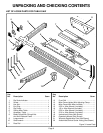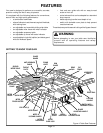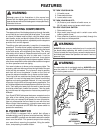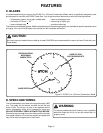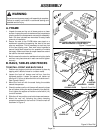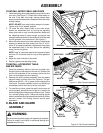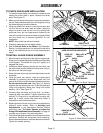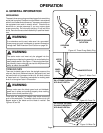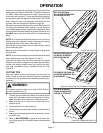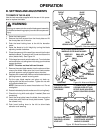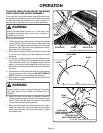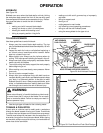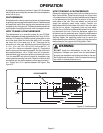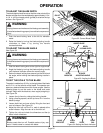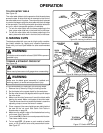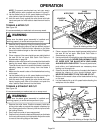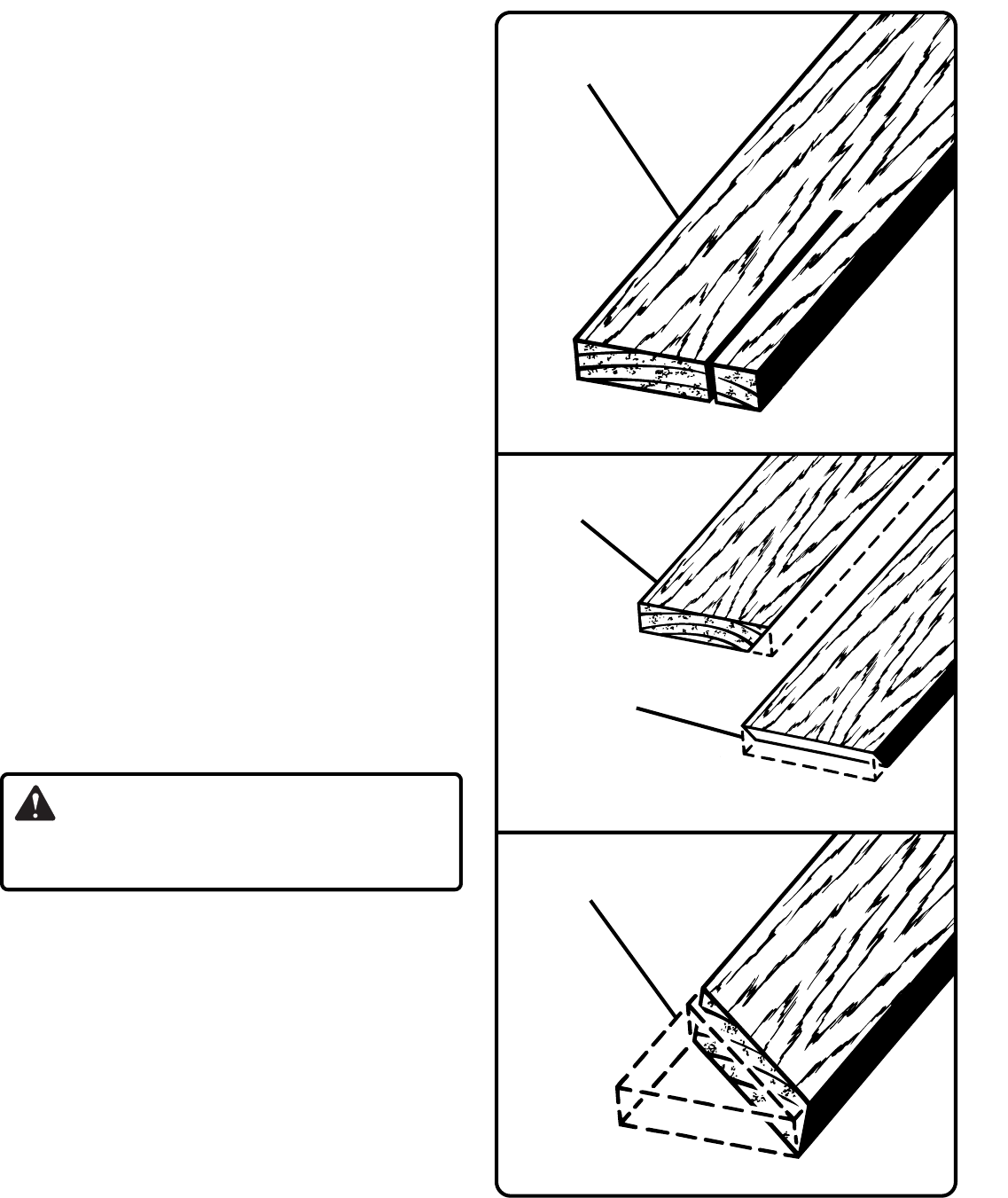
Page 17
OPERATION
Miter cuts are made with the wood at any angle other than
90 degrees.
See Figures 19 and 38.
(The wood is angled to
the blade.) Miter cuts may tend to “creep” away from the
miter fence during cutting. This can be controlled by holding
the workpiece securely against the miter fence. The RYOBI
Miter Clamp Kit has been designed and tested for this
purpose. See the Accessories Section on page 38.
Rip cuts are made with the grain of the wood.
See Figure 20.
To help control kickback while making a rip cut, keep the
anti-kickback pawls properly maintained and adjusted, make
sure one side of the wood rides firmly against the fence, and
ALWAYS use a push stick with small or narrow pieces of
wood.
NOTE: Push sticks should also be used to finish a cut when
ripping long narrow pieces of wood, to prevent your hands
from getting close to the blade.
See Figure 39.
Bevel cross cuts are made with an angled blade, cutting
wood across the grain.
Bevel rip cuts are made with an angled blade, cutting wood
with the grain .
NOTE: The fence must always be on the left side of the blade
when making bevel cuts.
See Figures 21 and 41.
Compound or bevel miter cuts are made with an angled
blade on wood that is angled to the blade. Be thoroughly
familiar with making straight cross cuts, bevel cross cuts,
and miter cuts before trying a compound miter cut.
See
Figure 22.
CUTTING TIPS
Dado and rabbet cuts are non-through cuts which can be
either rip cuts or cross cuts. Carefully read and understand
all sections of this operator's manual before attempting any
operation.
WARNING:
All blades must be rated for at least 5,500 RPM to
prevent possible injury.
1. The kerf (the cut made by the blade in the wood) will be
wider than the blade to avoid overheating or binding.
Make allowance for the kerf when measuring wood.
2. Make sure the kerf is made on the waste side of the
measuring line.
3. Cut the wood with the finish side up.
4. Knock out any loose knots with a hammer before making
the cut.
5. Always provide proper support for the wood as it comes
out of the saw.
6. Refer to ACCESSORIES on page 38 and check with
your Ryobi dealer for information about recommended
blades.
CUT WITH THE GRAIN,
ON A STRAIGHT WORKPIECE
WITH BLADE VERTICAL
CUT WITH THE GRAIN, ON
A STRAIGHT WORKPIECE
WITH BLADE ANGLED
CUT ACROSS THE GRAIN, ON
A STRAIGHT WORKPIECE WITH
BLADE ANGLED
Figure 20: Rip Cut
Figure 22: Compound Miter Cut
Figure 21: Bevel Rip Cut And Bevel Cross Cut
CUT WITH AN ANGLED
BLADE AND WORKPIECE
ANGLED TO THE BLADE



